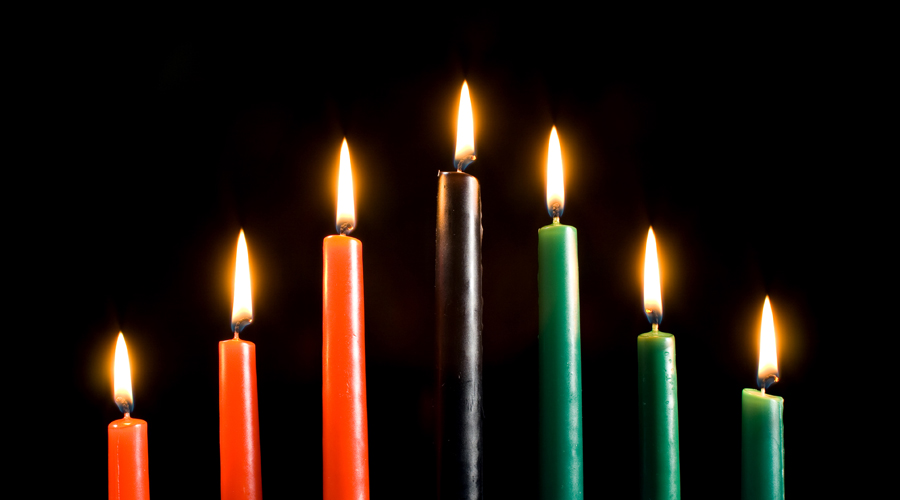To help you get ready for Kwanzaa, here are five things to know about the pan-African holiday.
1. Kwanzaa was created in 1966. Maulana Karenga, a professor of Africana studies at California State University, established Kwanzaa in 1966 as a cultural celebration of African heritage and family. From the beginning, Kwanzaa has been a time for contemplation and recollection of past hardships, faced by individuals and communities, and the ways history can inform and affect future happiness.
2. The holiday draws on a variety of African traditions. Kwanzaa derives its name from the Swahili phrase “matunda ya kwanza,” meaning “first fruits.” Three colors are associated with the celebration: black for people of African ancestry, red for noble blood and green for the lands of Africa.
3. Kwanzaa takes place over seven days annually from Dec. 26-Jan. 1. Each year, millions of African Americans gather with friends and family throughout this week to honor the holiday’s seven founding principles: unity (umoja), self-determination (kujichagulia), collective work and responsibility (ujima), cooperative economics (ujamaa), purpose (nia), creativity (kuumba) and faith (imani). Each day of Kwanzaa is dedicated to one of these seven principles, collectively known as the Nguzo Saba.
4. Candles are a key part of Kwanzaa. Celebrations often feature seven candles — three red, three green and one black — that are placed in a kinara, a candle holder. One candle is lighted each day to honor Kwanzaa’s seven principles.
5. The Postal Service has issued eight Kwanzaa stamps since 1997. The latest stamp, released this year, features the face of a woman in profile with her eyes closed. Her contemplative demeanor signifies the ways in which observers of Kwanzaa reflect on the seven founding principles, the Nguzo Saba, and their role in everyday life.
